
Come with me to the side of Malá Strana. This is perhaps the last place where you can, at least occasionally, fall into history for quite a few hundred years and thus avoid crowds of tourists. Although tourists have already discovered this part as well. You may be lucky that the door to the house is open. You will be able to see the local courtyards.
 Poetic places where you do not grill, but treat old trees and calmly hang clothes. The owners live here normally and protect their peace in the city center. But you don’t have to be deprived of this beauty either. Once a year, the Open Courts event takes place here. The owners decided to brag at least for a while and let a few visitors into the courtyards. At the birth of this event was the happening from 1981, when sculptors Kurt Gebauer, Čestmír Suška, Magdalena Jetelová and others exhibited their works in these secret places.
Poetic places where you do not grill, but treat old trees and calmly hang clothes. The owners live here normally and protect their peace in the city center. But you don’t have to be deprived of this beauty either. Once a year, the Open Courts event takes place here. The owners decided to brag at least for a while and let a few visitors into the courtyards. At the birth of this event was the happening from 1981, when sculptors Kurt Gebauer, Čestmír Suška, Magdalena Jetelová and others exhibited their works in these secret places. In this part of Malá Strana you will reach quiet and bizarre streets. If you walk here in the evening, you will breathe a real mystery.
In this part of Malá Strana you will reach quiet and bizarre streets. If you walk here in the evening, you will breathe a real mystery.
Itinerary: Jánský vršek – Jánská – Vlašská – Tržiště
STREET JÁNSKÝ VRŠEK
The name “Jánský vršek” was given to this nook after the no longer existing church of St. John the Baptist. Jánský vršek is a really picturesque corner of Prague. It is called so, because in the Middle Ages there was a settlement Obora In St. Jan under Petřín. The route of the mountain bike cycling race, called Prague Stairs, leads through Jánský vršek. The race is always in June. The route is unique. It measures 1250 meters and leads through the streets of Malá Strana and Hradčany.

Jánský Vršek Street, it was on these steps that actress Zita Kabátová sat and learned German. You can find her story in the article “Prague House Signs” on the blog.
HOUSE AT DONKEY IN THE CRADLE
You might think it’s a strange name. That’s it! 🙂 I’ll explain it to you in a moment. This place is full of legends and ghosts. It was in this house that the famous English alchemist Edward Kelly, who had the Czech King and Roman Emperor Rudolf II, researched to act as an agent of the British Queen Elizabeth I, together with hir teacher, mathematician, alchemist, astrologer and occultist of Welsh descent John Dee.
It was Kelly and Dee who were to win in favor of Rudolf II. However, Dee was received very coldly by the emperor and his first audience was the first, but also the last. It is he who was to use the sign in the form of two rings under the roof instead of the signature, which symbolized “only through the eyes of the queen“, but went down in history as the number 007. This was also later given to the most famous British agent James Bond.

After losing favor in Prague, they both came to the service of Vilém of Rožmberk. They stayed mainly at the Třeboň chateau (more in the article “Pearls of South Bohemia” on the blog).
Eventually, Kelly returned to Prague and stayed in this house. His first attempt before the emperor turned out great, because he was said to be able to turn any metal into pure gold with his special mercury. He also held a “black or ground mirror”, with the help of which he was said to be able to eavesdrop on other people’s calls and see from a distance.
MUSEUM OF ALCHEMISTS AND MAGICIANS OF OLD PRAGUE
The Museum of Alchemists and Magicians of Old Prague is located in the U osla house in the cradle. The name of this museum sounds a bit mysterious and so it looks inside. Here you can enter the mysterious room of Faust’s house, or climb the sixty steps to the attic, where you will find the laboratory of the alchemist Edvard Kelly. However, a visit to Kelly’s alchemical workshop would not be perfect without trying the famous elixir of youth. You can also walk up a 16th-century staircase designed by Kellly himself.
If you want knowledge, you can read the texts on the walls, which are prepared by historians and from Charles University. You can try to move the planets here or finish making the Philosopher’s Stone.
AND NOW FINALLY WHY DONKEY EARS?
According to legend, Kelly’s ears in England were cut for forgery of official documents. And because he was ashamed of it, he hid this shame under his long hair. One day, however, Anna Hrdlová, a gossip from Malá Strana, called Kelley from the court to her sick child. As the scholar leaned over the railing, she saw his severed ears, and out of anger that his secret was revealed, he conjured a donkey’s ears in the cradle. They disappeared only after the mother begged for her prayers to the Virgin Mary.
CROSS AND MEMORIAL PLAQUE OF JAN BLAŽEJ SANTINI
In Šporkova Street at the intersection with Jánská Street in the area of the former cemetery and the Church of St. Jan, was buried Jan Blažej Santini, a brilliant Czech architect of Italian origin. He was known for his fondness for hidden symbols.



In his will we find that as his place of his last rest he chose the modest church of St. Jan in Obora in Prague. But he didn’t get much rest here. The church was abolished by Josephine decrees and closed after two years. The church building was converted into a residential house. Today, only the cross and the memorial plaque on the former cemetery wall commemorate its existence. The fate of Santini’s remains is unknown. The placement of the memorial plaque on the wall in Šporkova Street was initiated by the civic association “Wandering for Santini“.
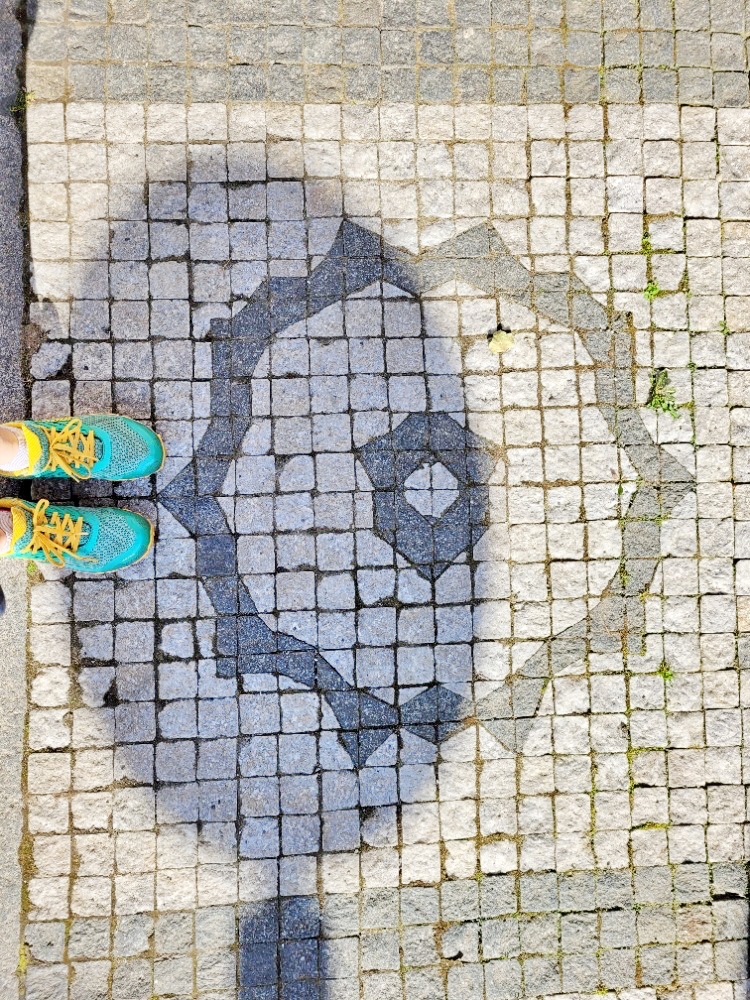
Under the slab, the floor plan of the church on Zelená hora is depicted in the pavement.
HOUSE No. 323/13 JÁNSKÝ VRŠEK
MEMORIAL PLAQUE OF ANEŽKA ZAJÍČKOVÁ
A memorial plaque of Anežka Zajíčková, the chairwoman of the ČSČK volunteer sisters in Prague III, who lived in the house, hangs on the house. During the occupation of Czechoslovakia, she became involved in resistance activities. It was Anežka who introduced dentist Jíří Jesenský to Jozef Gabčík and Josef Valčík. She led them behind him to treat their aching teeth. He then distributed them throughout Prague and helped them. These paratroopers then assassinated the deputy imperial protector Reinhard Heydrich on May 27, 1942. This action was called Anthropoid. Another airborne operation was the operation under the code name Silver A. The task of this operation was to deploy specially trained paratroopers in the Protectorate to ensure radio communication with London (Three Kings). Anežka also took part in this event. In 1942 she was tortured in the Small Fortress in Terezín and from there she was sentenced to death for cooperation with the Anthropoid and Silver A airdrops. She was transported to Mathausen, where she was executed.

HOUSE AT THE GEIGERS
MEMORIAL PLAQUE OF JOSEF SVÁTEK
At the house No. 325 it is impossible not to notice the memorial plaque, which belongs to the Czech writer and journalist Josef Svátek, who lived here for the last 15 years of his life and also died here. In these places, the village used to be surrounded by vineyards. From here he jumped to the editorial board of the government newspaper “Pražský deník”, which he managed. He befriended Neruda, who was a year younger. Svátek fell under the secrets of Prague. He dedicated his life to the Prague archives, which were full of secrets. The archives were almost his second “home.” Svátek chose an unknown legend and curiosity about Prague, which no one knew yet.

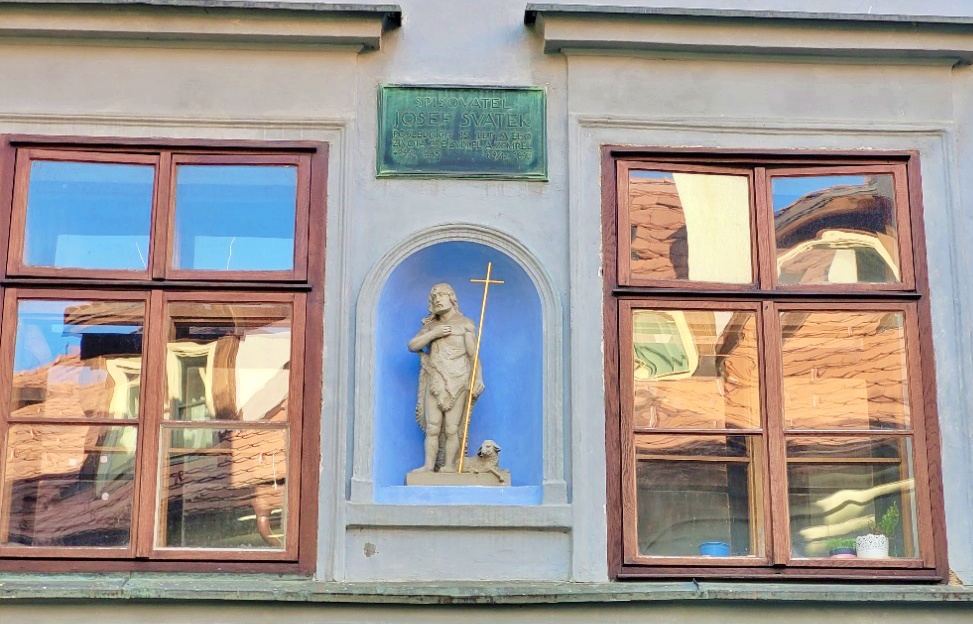
STREET JÁNSKÁ
The name of this dead end is derived from the church of St. John the Baptist, who already stood in 1141 in the settlement of Obora, which was located in this locality. Jánská Street is one of the quiet and sought-after corners of the Lesser Town.

KREMLIN HOUSE
The main landmark of Jánská Street is this beautiful house. You will definitely be immediately interested in the decorative facade. That, however, is not as old as it seems. It may seem like a Renaissance house, but the appearance is deceptive. It is a neo-renaissance style. So it dates back to the 17th century.
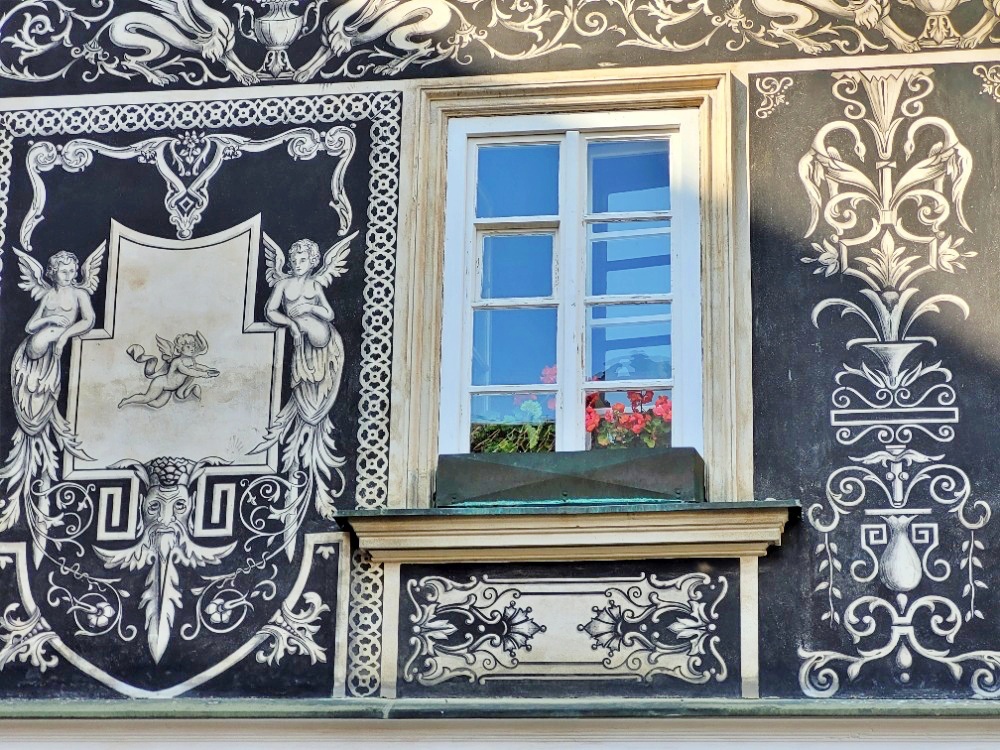


WHITE BEET HOUSE
Right next to it is the U Bílé řepy house, which you will know from my article on Prague house signs – here. You already know that the Czech actor Josef Kemr lived here. I’ll tell you more about it. He is said to have slept in a coffin here. 🙂 You know that he had a trabant. But he didn’t have the keys to him forever, so every time he got out of it, he took the steering wheel with him. And so you could meet him, for example, at the post office, shop or office.
HOUSE AT THE DRAGON
On the house you will find a beautiful house sign. A lot of people come here to take pictures of him.

THE HOUSE AT THE GREEN DEER
A well-known personality who lived in this house was the philosopher and poet Egon Bondy, whose real name was Zbyněk Fišer. His lyrics became the basis of a number of songs by the Prague rock band The Plastic People of the Universe. He had his underground study in the back of the house, which he lent to this underground group for music rehearsals. His personality is very contradictory. He had a disability pension, which he received for manic-depressive psychosis, which he apparently partially simulated. He cooperated with the StB. It is interesting that for several years he worked with StB under the pseudonyms Klíma, Mao or Oskar, and for several years, on the contrary, he was the problem person. He died tragically at the age of 77 in Bratislava as a result of the burns he suffered when his bed burned with a cigarette.
HOUSE AT STONEMASON
The house is one of the most beautiful buildings in Malá Strana. The façade of the house depicts the Holy Trinity, which was carved by the then owner of the house and the father of the author of the completion of the St. Vitus Cathedral, the stonemason Andreas Kranner.


VLAŠSKÁ STREET
Why the street name “Vlašská”? After all, no trees with nuts grow here? It was named after Italian immigrants who settled in this part of Malá Strana. They were mostly artists and craftsmen. And because the Italians were called “Vlaši” in Old Czech, hence the name of the street. The Italian community was very large. They built not only houses here, but even their own hospital. Today, there is a cultural center of the Italian Embassy, where you can attend exhibitions or learn Italian.



In the street you will find the Hospital of the Merciful Sisters of St. Karel Boromejský and the Lobkovický Palace, which houses the German Embassy. On the opposite side, however, there are several houses with an unconventional sign.
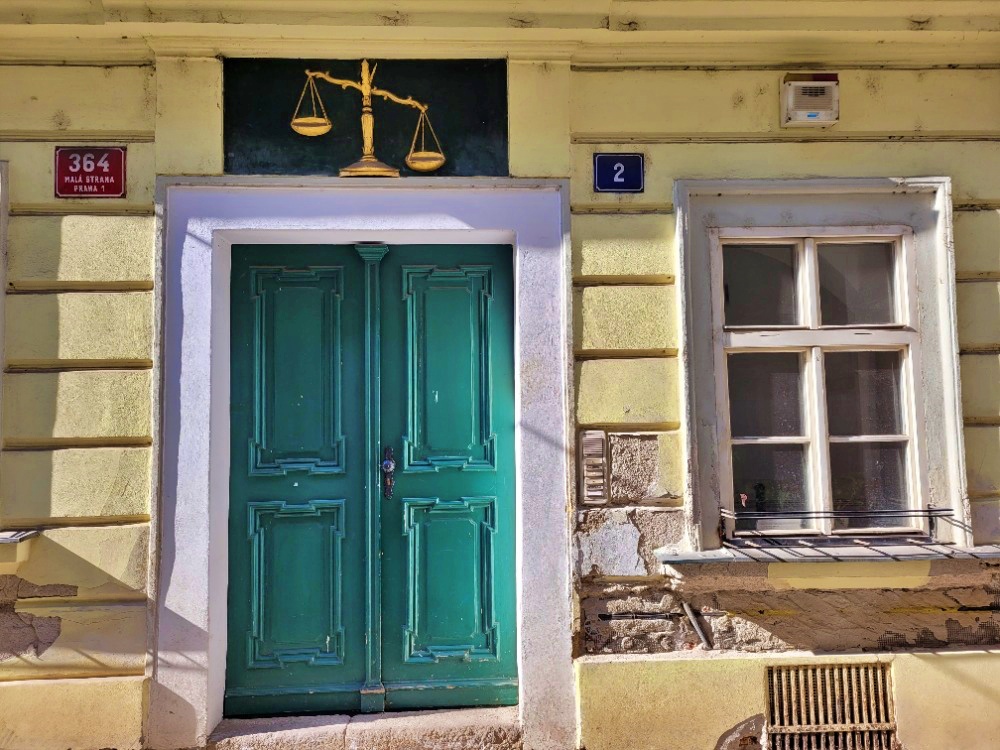

MEMORIAL PLAQUE OF CYRIL MERHOUT
In the street, you will also notice the memorial plaques of the Czech historian and conservationist Cyril Merhout. He is said to have been the best expert on Malá Strana. He was the head of the State Monuments Office and the chairman of the Club for Old Prague. He was credited with saving a number of Prague’s monuments. In the archives, he listed facts about old houses in Malá Strana, palaces, churches and people. The small book “Facts about the Malá Strana“, which he published two years before his death, surprises with how he knew every house, every owner in detail and knew what had happened where, and even spicy stories.

BLACK ELEPHANT HOUSE
Anselmo Lurago, an Italian builder and architect, lived in the house. He built the bell tower of the Church of St. Saint Nicholas on Malostranské Square, designed the Goltz – Kinský Palace on the Old Town Square and participated in the renovation of the Černín Palace on Loretánské Square. His great work is also the reconstruction of the Strahov Monastery into its current form.
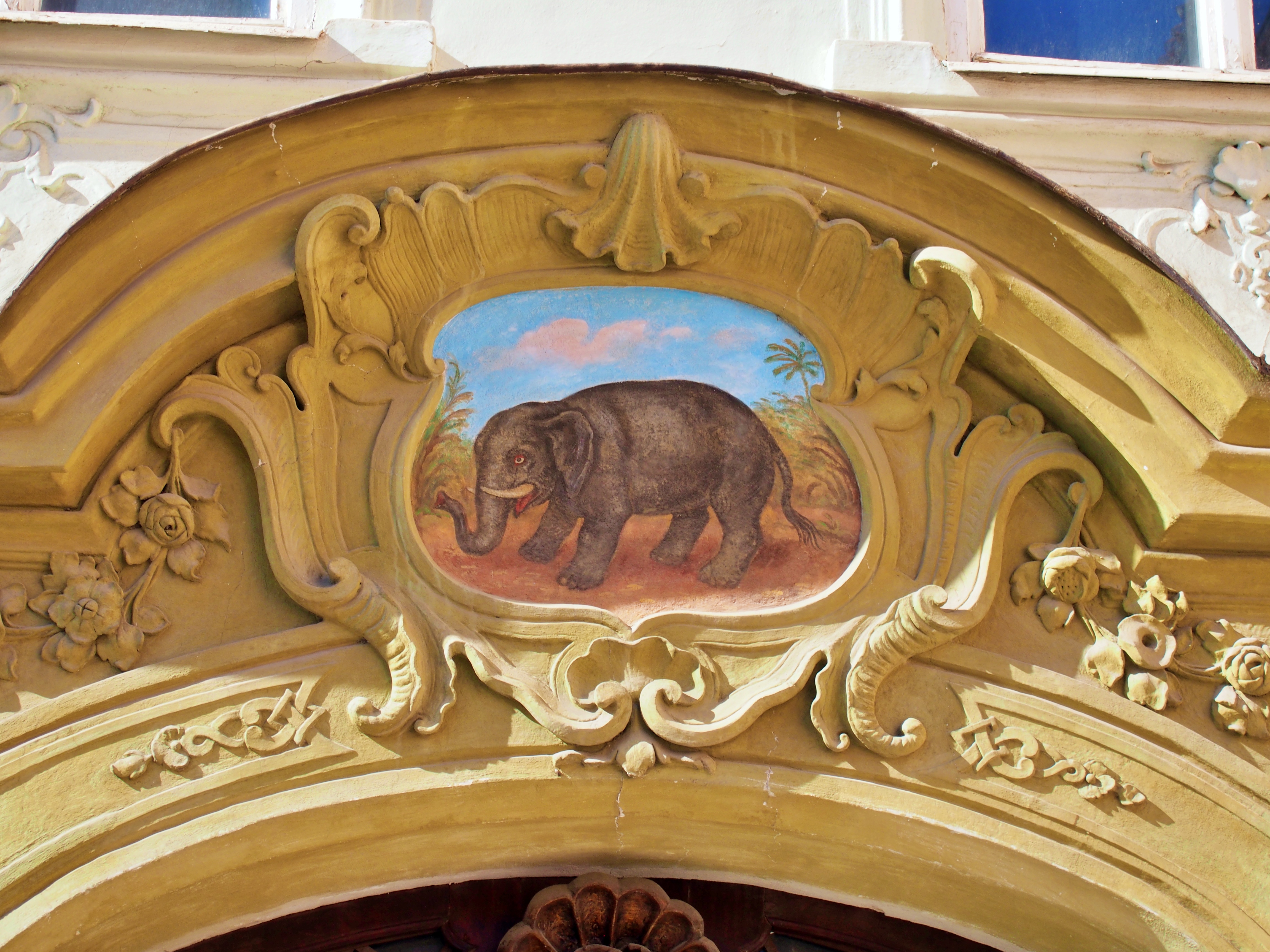
HOUSE AT THE BIG SHOE
Next door is a beautiful Renaissance house At the big shoes (U Velké boty). Today it houses a hotel.

BLUE PEACOCK HOUSE

HOUSE AT THE THREE RED ROSES
This house was bought by Jeroným Makovský of Maková in 1599. It was the chamberlain Petr Vok of Rožmberk and later passed into the service of Rudolf II. He was very interested in alchemy. According to some historical sources, Edward Kelley was tortured in this house to reveal to Makovsky the secret of the Philosopher’s Stone. Makovský also moved his brother Jan and his wife Alena and his mother-in-law into the house. Both ladies turned the house into a famous brothel. However, Makovský fell out of favor and was sentenced to death in the ensuing trial. The winner of the Nobel Prize in Chemistry, Jaroslav Heyrovský, lived in this house in the 20th century.
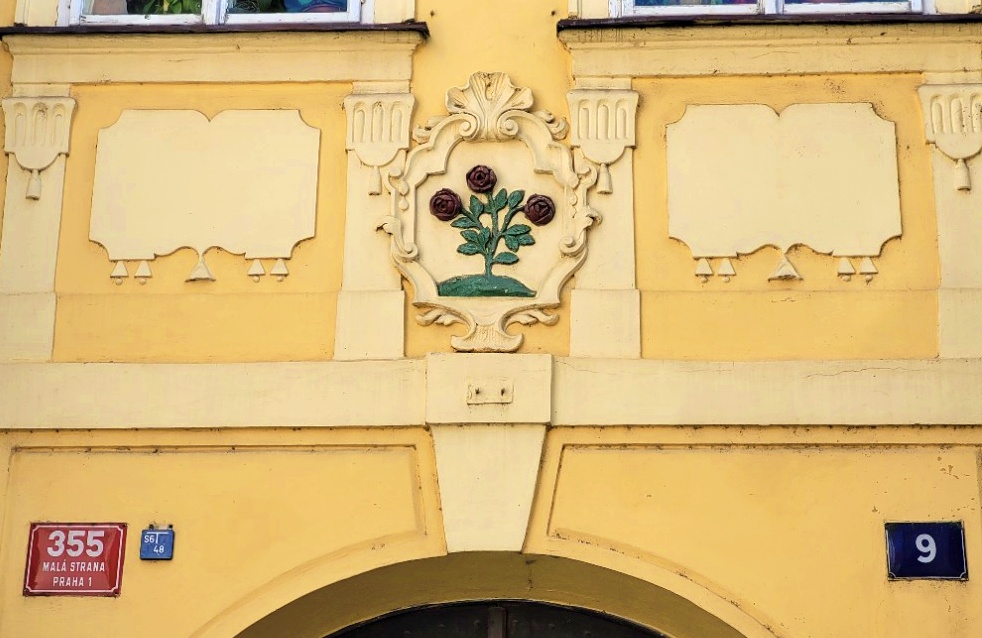

TRŽIŠTĚ STREET
BARÁČNICKÁ RYCHTA
Baráčnická rychta is located in Tržiště Street. And who were the “barracks”? So that the name doesn’t confuse you too much. They were not property owners. The association was founded as the “Free Community of Barracks” in Kolín. Its name was derived from the name of the inn where the company met regularly, called “Baráček”. Today’s activities of barracks people focus mainly on maintaining old traditions and customs, performing folk songs and dances in traditional costumes and organizing entertainment events.
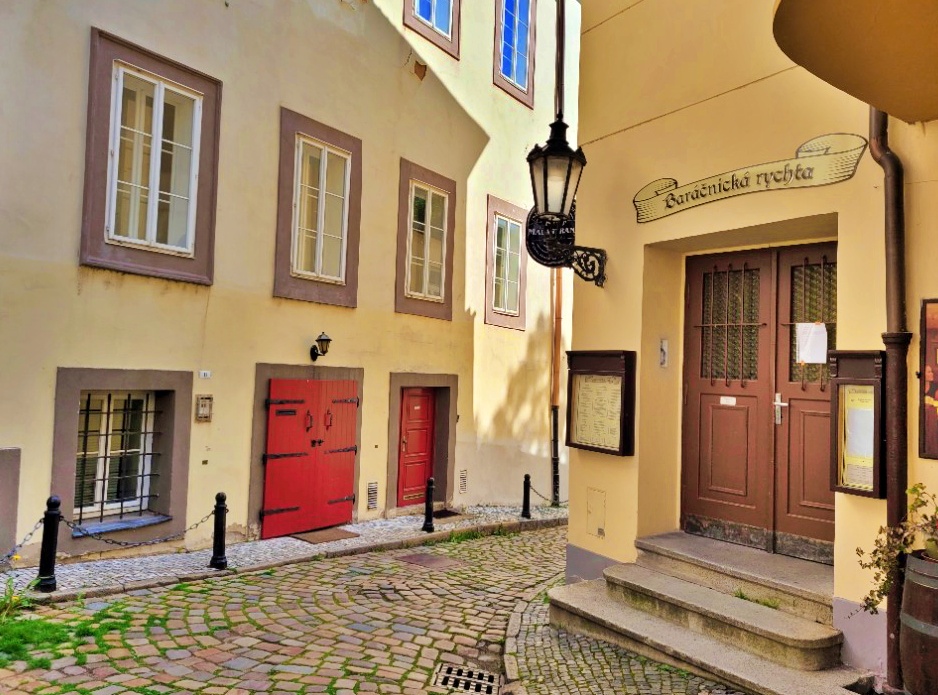


HOW TO GET THERE?
You can go on this path from the Strahov Monastery, you will go down the path towards the Strahov Garden. The monks grew vines here, but also fruits and vegetables. Then you go down the hill to Vlašská street. And you are there 🙂 Or you can turn here from Neruda street. It’s up to you.
If you liked the article, I’ll be happy if you share it or leave a nice comment below the article. 🙂
I would also want to invite you to join me on Instagram and on Facebook.

